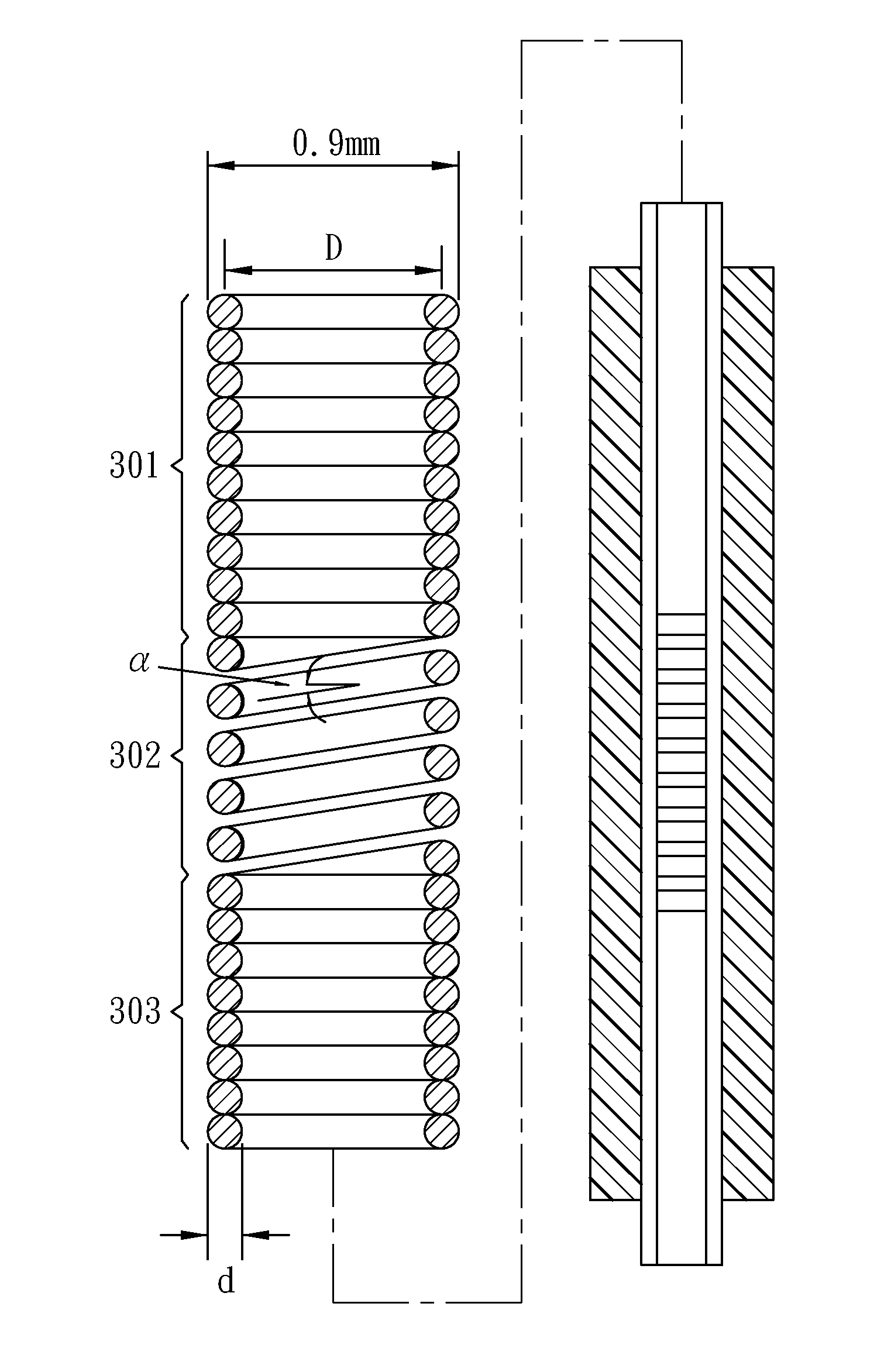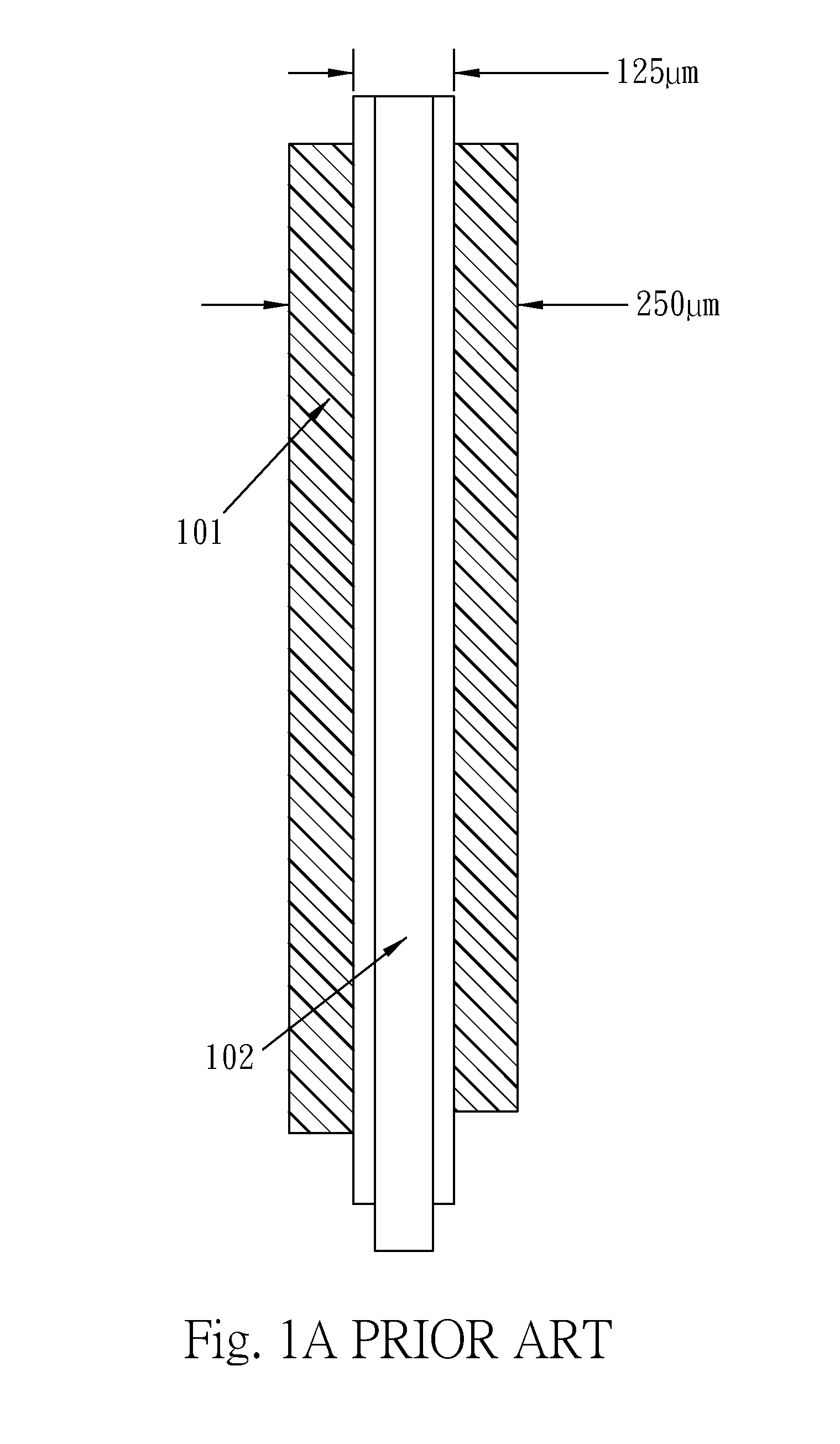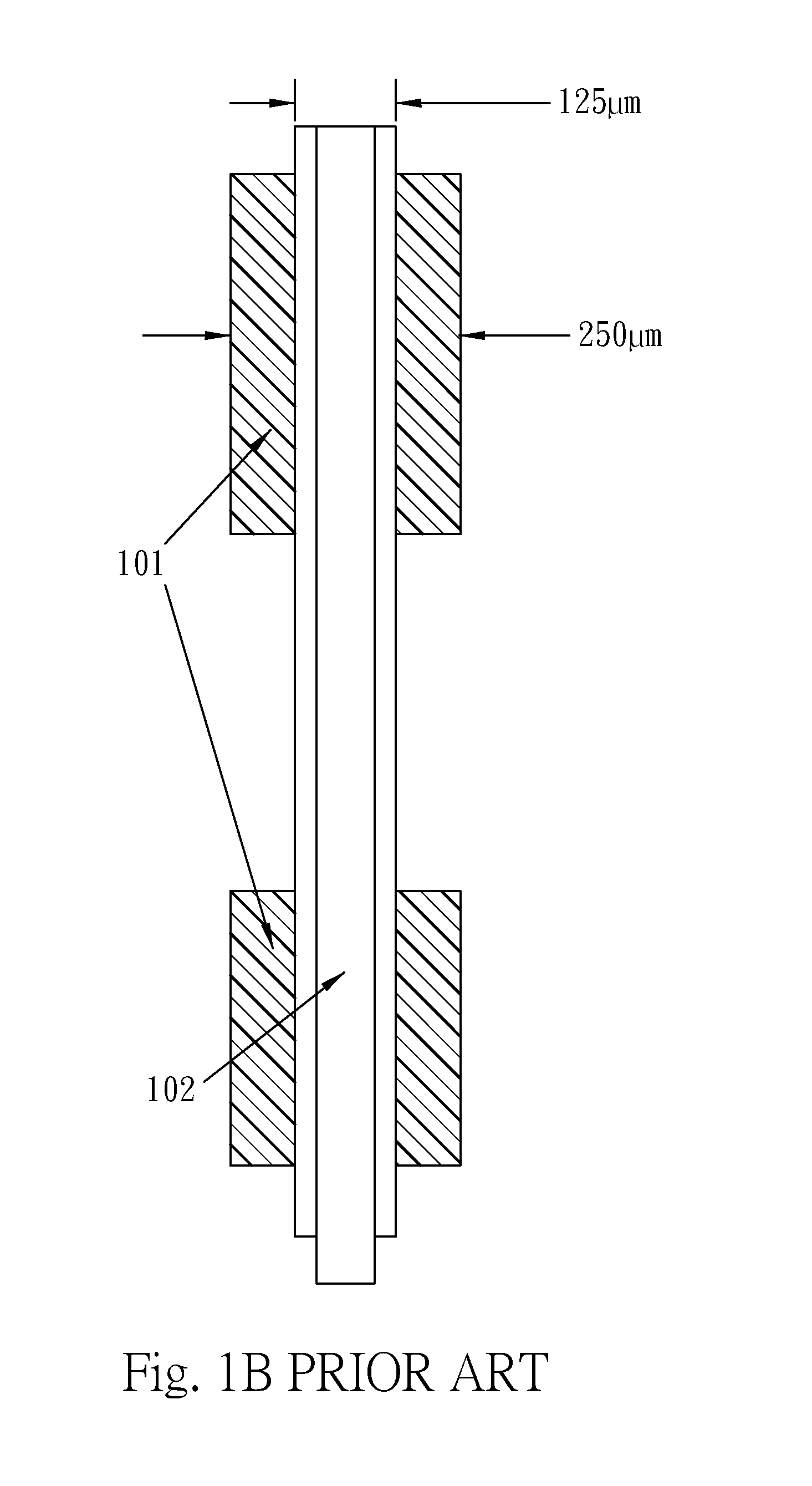Self-tensed and fully spring jacketed optical fiber sensing structure
a technology of optical fiber sensing and self-tensile, which is applied in the direction of force measurement, force measurement, and optical property variation measurement, etc. it can solve the problems of strain hysteresis and loss of accuracy, affecting wavelength drift /sub>b, and being difficult to simulate, so as to prevent elastic deformation and small volume , the effect of light weigh
- Summary
- Abstract
- Description
- Claims
- Application Information
AI Technical Summary
Benefits of technology
Problems solved by technology
Method used
Image
Examples
first embodiment
[0038]In this embodiment, as shown in FIG. 3C, a tensed optical fiber sensing spring structure, e.g., the structure shown in FIG. 3B, is installed to a structure under test. The present invention provides an adjustable pre-tensed fiber grating structure, which protects an optical fiber placed therein by a fully spring jacketed length and satisfies a commercial standard of a 0.9 mm outer diameter. Further, the pre-tensed fiber grating structure includes a compression spring 302, which is utilized as a jacket having an outer diameter of 0.9 mm and is pre-compressed to form a stress-strain relationship in a linear elastic region. The compression spring 302 having a predetermined gauge length is compressed and then fixed to two ends of optical fiber and spring pre-tensing fixing and connecting rings, i.e., to positions of the upper connecting ring 308 and the lower connecting ring 309. When the two connecting rings are fixed at a bare optical fiber 201 that is not compressed in an axle ...
second embodiment
[0043]A temperature compensated optical fiber sensing spring structure is provided according to a second embodiment of the present invention.
[0044]As previously described, the physical properties of an FBG are affected by temperature changes to further affect the wavelength drift ΔλB. The wavelength drift caused by the temperature is often represented by ΔλBT. Thus, when applying the FBG as any type of sensing device, multiple sensing devices, placed next to one another or closely connected in series, are utilized to obtain reference values of the wavelength drift ΔλBT caused by the same temperature change. The wavelength drift ΔλBT caused by the same temperature change region is then deducted to perform a function of temperature compensation and correction. In the second embodiment, a temperature compensated optical fiber sensing spring structure is as shown in FIG. 8. 801 represents a sensing spring carrier rivet. In FIG. 8, the two sets of optical fiber sensing springs arranged n...
PUM
 Login to View More
Login to View More Abstract
Description
Claims
Application Information
 Login to View More
Login to View More - R&D
- Intellectual Property
- Life Sciences
- Materials
- Tech Scout
- Unparalleled Data Quality
- Higher Quality Content
- 60% Fewer Hallucinations
Browse by: Latest US Patents, China's latest patents, Technical Efficacy Thesaurus, Application Domain, Technology Topic, Popular Technical Reports.
© 2025 PatSnap. All rights reserved.Legal|Privacy policy|Modern Slavery Act Transparency Statement|Sitemap|About US| Contact US: help@patsnap.com



